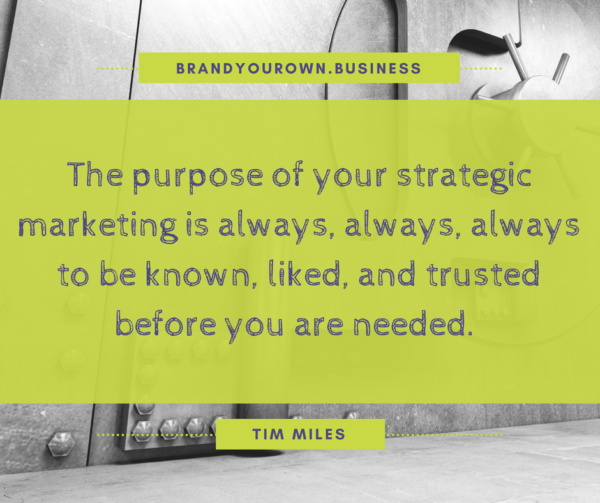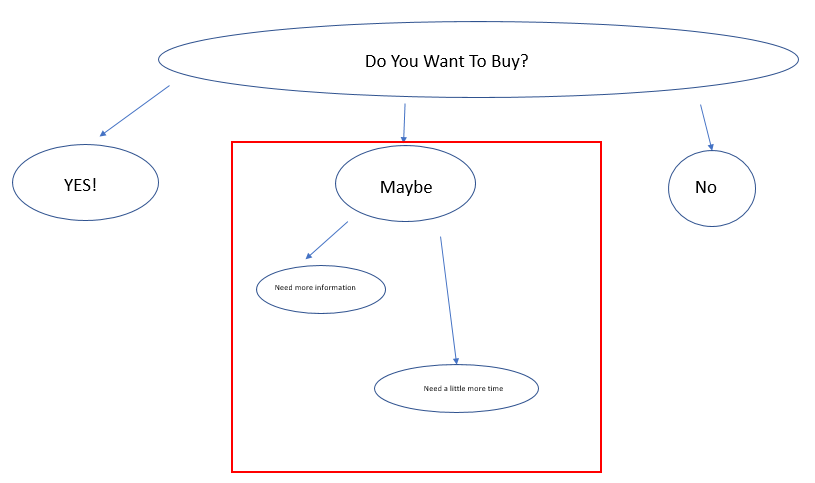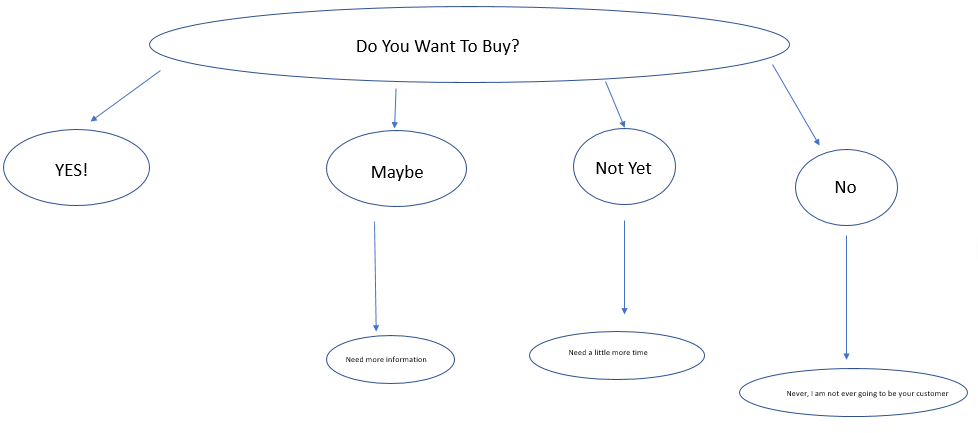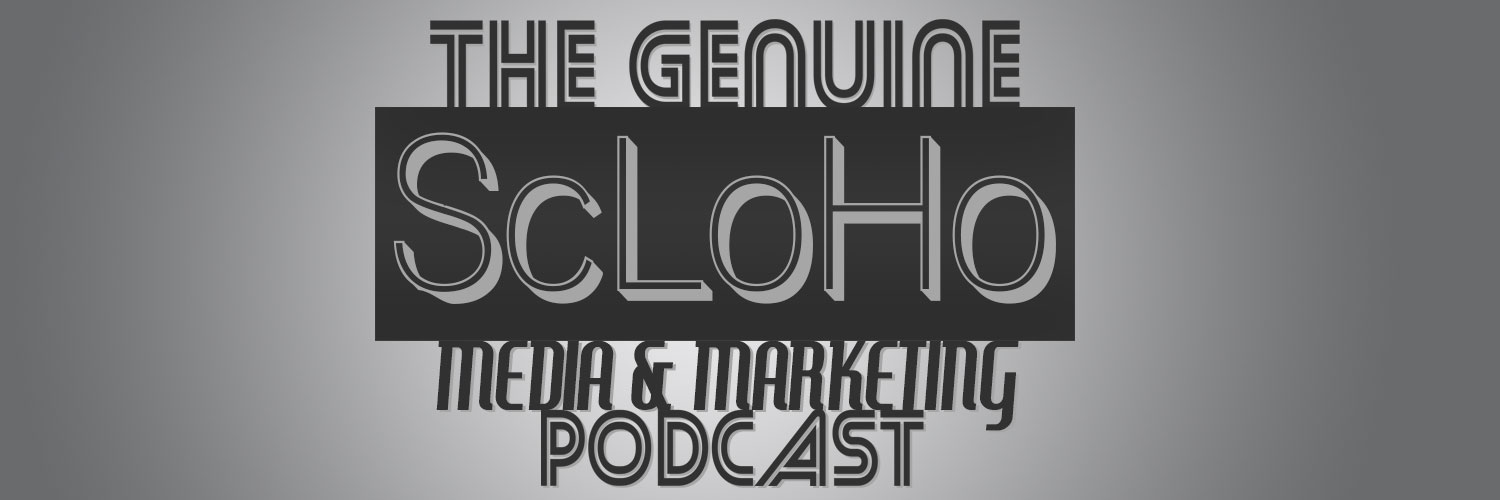
by Scott Howard | Nov 15, 2017 | Marketing and Advertising Insights, ScLoHo's Collective Wisdom, The Not-So-Secret Writings of ScLoHo, WOWO Fort Wayne Radio Advertising with Scott Howard
The Long Haul.
The Purpose of Your Strategic Marketing is Always, Always, Always to be Known, Liked and Trusted Before You are Needed. I just stole that, well borrowed it from Tim Miles because he is so on target with that statement that I want you to hear it from me too.
Before I share my side of this, here’s how I discovered that bit of wisdom. Years ago, I found Tim and his company as one of Roy Williams Wizard of Ads Partners and was impressed with what he and his staff share regarding marketing and life. I get his free weekly email and have his Good Company book. Here’s a link to get it all too and the email that contained the Tim quote. (Go to the top of that page and follow the directions.)
So why is it important to be Known, Liked, and Trusted Before You Are Needed?
As human beings, we are creatures of habit. We develop preferences for things we like and those things are what we tend to do as long as we are able to.
Take breakfast for example.
I am a breakfast eater. My body requires that I eat something within about an hour of getting up in the morning. By the way, I use the word requires, in reference to myself. I know lots of folks who say they can’t eat breakfast. But play along with me and we’ll skip the pros and cons of what meals to eat or skip.
Between 350 and 360 days each year, I wake up in my own bed and follow a routine that involves eating something and drinking something for breakfast. I either have something at home or pick something up on my way to my first meeting. 50 times each year, I have a weekly meeting that includes a breakfast buffet.
But those other 300 days, I limit my selection to what I am familiar with.
I know how to prepare, find or buy breakfast. I don’t have to Google it or watch a YouTube video on how to eat in the morning. I don’t have to ask my Facebook friends or well, you see where I am going, right?
Regarding breakfast, I have a Top Of Mind Awareness of not just what’s available, but what I, Scott Howard, know, like and trust to fuel my morning.
You do too. It’s the way we as humans are wired.
But what about something we don’t do everyday? How do we learn about those things?
I recall the first time I had sushi. I was adventurous and my wife and I just ordered something. It wasn’t a good experience. A couple years later, my daughter Rachael offered to take me out and teach me how to enjoy sushi.
Because I know, like and trust my daughter Rachael, I took her up on her offer and because she knows, and likes me, she introduced me to sushi style food that she trusted I would like.
It worked. I now know what kinds of sushi I like and I’ve even had it for breakfast once.
How does this apply to your business marketing and advertising?
There are times when everyone of us will need to spend money on something that we have not spent money on before. It could be a furnace repair, maybe buying your first house. Tires or car repair. The first time we spend money on anything new, we are looking for a business or product that we can trust. We want to like the people we are dealing with and if we have some knowledge of them, they are more likely to be on the short list of who we consider to spend our money with.
As I tell my advertising partners, unless you sell Christmas trees and nothing else, you better be building Top Of Mind Awareness every month, year round. There is always someone who wants what you have to sell if you invite them to spend money with you when they are ready to buy.
Most of the advertising partners I work with are not retailers. That’s by choice and design. I get to choose who I work with. And I get to choose who I don’t want to work with. I want to work with business people who understand what I just said and want to learn how to create long term success. That’s why I write, blog, podcast and work for the long term too.
I don’t care if you eat sushi or breakfast, but I do care that you want to do what’s right for your customers. Do you have what it takes to be one of my long term advertising partners with WOWO Radio or any of the additional online marketing options I have? Reach out to me and let’s find out.

by Scott Howard | Nov 7, 2017 | Marketing and Advertising Insights, ScLoHo's Collective Wisdom, ScLoHo's Fort Wayne, The Not-So-Secret Writings of ScLoHo, WOWO Fort Wayne Radio Advertising with Scott Howard
Women and WOWO radio, a topic that I’ve talked about for nearly 15 years. Today, I have some insight that business owners, especially retailers need to know.
When I started in the radio advertising business in Fort Wayne, Indiana in 2003, I worked for a competing company, not WOWO radio. I spent over 9 years trying to convince people not to advertise with WOWO.
It was this radio station for old white guys was my usual argument, and you want to reach people who have money to spend, right?
A few years ago, I wised up. In November 2013, I started the process to join WOWO and it has been fantastic for multiple reasons but the one I’m going to focus on right now is about the audience of WOWO.
Is it really a bunch of old white guys that listen to WOWO?
Well, yes and no. There are a significant number of men age 50+ who listen and they are important people to reach with your advertising messages. However, the number of women who actively listen is impressive too.
The Women of WOWO are likely to be Baby Boomer age and I’ve got a couple of reasons why that is important that I read in an article from Mediapost. This article emphasizes why you should invite Baby Boomer Women during the holiday season, but it’s appropriate year round. 
Here’s a couple of quotes from the story:
Today, every fifth adult in the United States is a female over 50. They are the healthiest, wealthiest and most active generation of women in history who control half of the country’s discretionary income and 75% of the country’s wealth.
Okay, think about that for a second. 75% of the country’s wealth is in the hands of 20% of the adults in this country. And these are not the grandmas of the past, these women are the healthiest, wealthiest and most active generation of women in history who control half of the country’s discretionary income. 
Wow, that sounds like the perfect group of consumers to aim my advertising and marketing to, right? Problem is most retailers are not inviting these Boomer women to spend money with them.
Instead, they spend less than 10% of their holiday marketing budgets targeting Boomers.
Retailers should devote somewhere between 50 and 75% of their marketing budgets to reach Baby Boomers!
One reason marketers and retailers ignore Boomer women is the belief that they’re not tech savvy enough to keep up with the changing retail environment. With so many businesses moving to online models, the focus is on younger audiences, particularly millennials. But Boomers are much more tech savvy than given credit for, actually spending more online than millennials. Many may prefer the experience of shopping in a store, but they’re perfectly comfy with e-commerce.
The Mediapost article gives some impressive numbers regarding the online habits of Baby Boomer Women. One that really caught my eye was the number who use their smartphone daily for shopping. 
Let’s address another ageism myth and that is that by a certain age, we become blindly brand-loyal. Not true. If you take them for granted and don’t continue to invite them to be your customer, they are ripe for the picking.
Being ignored for years has resulted in many Boomer women abandoning brands to which they’ve been loyal for decades. And now those brands are in the position of having to figure out how to win these consumers back. An excellent first step for brands and retailers wanting to reclaim their loyalty is to take the time to understand what drives Boomers to make a purchase. What are their needs, and the emotional triggers that prompt a purchase? Believe it or not, their needs are similar to those of other generations. They want convenience, an emotional connection to the brand, and to hear a great story that resonates with their lives. And a loyalty program that offers real benefits and lets them know you appreciate their business.
There’s more you need to know:
Sure, Baby Boomers are tech-savvy and often purchase online, but many still prioritize good old-fashioned service above all else. Marketers and retailers can provide that service by sending follow-up emails that provide the opportunity for Boomers to give feedback and make their voices heard. They need to set aside their preconceptions and stop looking at Boomer women through dated stereotypes. Most importantly, they need to recognize that these women are not one homogenous group. All Boomer women are not grandmas or caregivers. Engage them, and let them know you want to build an ongoing relationship with them. 
In today’s world, our economy is heavily influenced by Boomer women. Marketers need to recognize that these consumers are not stuck in the “good old days” and that they don’t prioritize buying the brands with which they grew up. Take the time to build a relationship with these consumers. Make it clear that they’re important to you, and they’ll reward you.
And now let me circle back to the Women of WOWO radio. I took a look at the latest radio rating information I have access to and asked how many women in the Fort Wayne area that are Baby Boomers listen to WOWO and all the other radio station in the survey.
27 radio stations were in the list. I bet you didn’t realize there are that many radio stations in the Fort Wayne area, and actually there are more than that, but the others didn’t have enough Baby Boomer listeners to qualify to be on the list.

WOWO radio is at the top, with over 30,000 Baby Boomer Women listening every week. Number two on the list only has around 20,000. Everyone of those other radio stations have just a fraction of what WOWO has. I can share this list with you privately if you want to see it. 
So to wrap this up, Baby Boomer Women control 75% of the wealth in the United States, even though they only make up 20% of the population. Locally the very best way for retailers to invite them to spend their money with you is with WOWO radio.
I can help you with that. Just ask.
(By the way, the women’s pictures in this article are from my Facebook friends, some of whom I’ve know since we went to high school together 40 years ago, all are Baby Boomers, and one is my bride.)

by Scott Howard | Oct 24, 2017 | Marketing and Advertising Insights, ScLoHo's Collective Wisdom, The Not-So-Secret Writings of ScLoHo, WOWO Fort Wayne Radio Advertising with Scott Howard
For most people who see, hear, or read your advertising, The Answer is No.
And that is okay.
Today we are going to talk about realistic expectations when it comes to advertising and marketing. Some of the people who sell advertising are not going to like what I am about to share, but that is okay too.
By the way, this article was inspired by a conversation I had with my friend Dennis last week and also by an article by Seth Godin, where he talks about why negative reviews are sometimes okay.
Often advertising sales people will tell you about how many people will see or hear your advertisement, which may have an element of truth to it, but you need to understand what that number represents and what it really means in relationship to your business.
First some numbers:
Those people in the outdoor advertising business that sell billboard signs that you see along the side of the road usually use the estimated traffic count of how many vehicles drive by that section of road per day. They then do some math and multiply that number of vehicles by 1.5 passengers and tell you that your ad will be seen by all these thousands of people.
Television stations, radio stations, they both get ratings numbers from an outside company that estimates how many listeners or viewers a station has. Again, there are hundreds, even thousands of people that are watching or listening, right?
Some media and advertising companies use a different kind of method, like the phone book companies would say that they reach the entire population of your city. These days we know from our own behavior, that the percentage of people who take that phone book and immediately toss it in the trash grows every year.
Digital advertising has some track-ability to it but it’s a flawed system too.
But I’m not here to discourage you from advertising, so I better return to the topic, the headline of this piece which is The Answer is No.
What in the world am I talking about?
I’ll tell you.
For the majority of the people that your advertising message is exposed to, the answer right then and there is no. They are not going to buy your stuff at that moment. Just because I see or hear an advertisement or marketing message for you and your company, I am not going to immediately react and spend money with you right then and there.
And that’s okay.
Your business is not capable of handling all the potential customers that your advertising reaches at the moment your advertising message is seen or heard.
Can your restaurant handle 30,000 customers at lunch today?
Can your auto repair shop take care of 100 new customers tomorrow?
If everyone that sees or hears your advertising this week wanted to become your customer would that be a blessing or a nightmare?
Fortunately only a fraction of the people will become your customer at any given time.
Each have their own reason too.
I went thru this exercise with my friend Dennis who owns a service business. Dennis has a goal of how many customers he wants to add to his business this year and he’s a little short. And he also has a couple of slow months coming up where his main goal is to stay in business. He’s pretty smart about it and knows the up and down months so he plans for them. That’s part of his success.
I presented him with an idea using my radio station, WOWO radio in Fort Wayne, Indiana, that can help him fill up the rest of his year and also transform those slow months into busier months. I wrote three words on a paper and asked him where he was right now with my idea.
Those words were:
Yes
Maybe
No

Yes meant we would take the next step to implement my idea.
Maybe meant there were still questions and things to consider.
No meant no way.
Then I added a few letters to the word no on the paper and changed the No to
Not Yet
That’s where Dennis really is right now.
There are a couple of items that need to be taken care of first, like adding to his team and training his new employees. Then we will look at the timing and see if my idea can be implemented.
Consumers go through this all the time.
Just because someone who sees or hears your ad doesn’t say Yes right now, you might think they are saying No.
Some of them are really saying Maybe or Not Yet.
And that’s okay.

The reason you need to advertise long term or more than once is to continue to reach those who are saying Maybe, and Not Yet, because they will often say Yes one day.
Want help with your marketing plans and advertising? Let’s connect.

by Scott Howard | Oct 17, 2017 | Marketing and Advertising Insights, ScLoHo's Fort Wayne, The Not-So-Secret Writings of ScLoHo, WOWO Fort Wayne Radio Advertising with Scott Howard
The concept of How To Conquer The World is pretty vast and could apply to a multitude of applications, so I’m going to limit this article to the stuff that I’ve learned for 50 years, since I was a 7 year old kid.
I’m also going to talk about the world of business and relationships.
I’ll even narrow it further and limit this to marketing and advertising.
So if you want to know how to conquer the world with military power, this article isn’t for you. Or is it?
First off, you need to pace yourself.
The overnight success stories of others are not what they appear to be. Before the so called overnight successes we see in the world around us, there were plenty of days and nights that did not look like success. 
Set your expectations in proportion to the work you put in. There are 168 hours in this week. You need balance between the things your human body needs and your business passions. Simple things like sleep, food and non-work related activities will help you become stronger, or if you ignore them, that can destroy you.
Would you rather be a big flash in the pan and get 10 minutes of fame or build a long term success? Depending on your age and experience you may answer differently. It’s taken me some time to realize that it’s the long term that is more meaningful.
As I share my story, feel free to picture your own life story too.
When I was a 7 year old I was starting 2nd grade at a new school where I knew no one. Most of my classmates had known each other from kindergarten and 1st grade and I was one of the new kids. Over the next 5 years, I became friends with many of my classmates, but not all. I gained a few close friends out of that initial class of 25 and some of those I still have friendships with due to the connectivity of social media.
7 years later, I went through nearly the same experience as an awkward 14 year old starting at a new high school filled with hundreds of students. I knew 2 of them when I walked in and not that well. Over the course of 4 years, I developed relationships with several, but again most of my classmates had friendships that were 8 years strong before we met.
After my formal education ended, my career path took me to new towns and radio stations where I worked on the air. Some relationships developed and some remain to this day, mostly thru reconnecting online because we all went our own separate ways career wise. Back then, my idea of conquering the world might have been to be a top 40 disc jockey in Chicago or New York. Turns out one of my co-workers got that gig in New York and yet he often recalls his days of working on the air in Fort Wayne Indiana as some of his favorite times.
You really don’t need to conquer the world. Instead you need to build relationships.
In the business world, it’s a matter of connecting with the people who want to either buy what you have to sell; can sell you what you need to buy; or who can connect you to those you need to connect with.
I’m in the advertising and marketing business. Primarily with WOWO Radio in Fort Wayne, Indiana. The same city I was in when I was starting 2nd grade and my freshman years as the new kid in school. I left and returned. Not on purpose, at least the returning part, but here I am 19 years straight as a citizen of Fort Wayne, longer than I have ever lived anywhere.
The long term relationships that you can develop in your life are also the relationships that will help you in business if you treat people with respect and honor. Be true to your word and when you screw up, admit it and apologize.
Don’t be afraid to make mistakes. Learn from them. Learn from others too. Find a mentor and mentor others. Read, talk and most important… listen.
Ask, explore, make changes as needed but remember the only way to conquer the world is one relationship at a time.
The world of advertising and marketing is continuing to evolve.
The mass media outlets like broadcast television networks, ABC, NBC and CBS attract less of the masses as other forms of entertainment and news on different platforms have become available. Similar patterns have occurred in other traditional mass media vehicles. Fort Wayne had two newspapers for decades and now we have just one due to declines in circulation. The number of local radio stations tripled in Fort Wayne from my youth to today and there are plenty of other options to get what radio stations used to offer exclusively.
Fortunately, my radio station, WOWO continues to attract a healthy sized audience with listeners who develop a “relationship” with our on-air personalities, and ours is a good business model for the listeners, the businesses that advertise with us and for the station itself. WOWO is not always the answer, but it might be.
You as a business person, need to determine how to find those individuals that will help you and your business succeed. The advertising and marketing options are nearly infinite compared to a few decades ago, however there are some guiding principles that you should follow that involve relationships that will never go out of style.
Contact me for help to conquer the world, or at least your corner of it.

by Scott Howard | Oct 10, 2017 | Marketing and Advertising Insights, The Not-So-Secret Writings of ScLoHo, WOWO Fort Wayne Radio Advertising with Scott Howard
Let’s talk about your brand and reputation because Marketing Perceptions are Messy.
I am currently working with a local branch of an international organization that understands the importance of being accurate in their marketing messaging. So much so, that they have a compliance department that reviews all of their marketing and advertising outreach including what we, WOWO Radio are going to be doing with them this month.
I usually don’t need to jump through as many hoops as I have with this company to put together an advertising campaign for most of the people I work with, but this is fine. They understand the power of bad publicity and in this social media world how bad stuff can go viral.
I sometimes wish my local business owners were as aware of this and so that’s what we are going to talk about today.
You can control the content of your paid advertising messages because you approve those ads ahead of time.
But what about the other marketing messages that are out there?
The way your drivers behave when they are driving your company vehicles for example?
The words and actions of your staff when they are at a customers home or business?
The words and actions when your people are enjoying lunch at their favorite restaurant?
Here’s one that I take into consideration every week:
The words that are spoken that are not necessarily the words and policies of your company, but are said by a representative of your company?
Do you have a policy in place for any of this?
When I began the podcast version of my weekly website articles, I decided to play it safe and every recorded version includes the following disclaimer:
THERE IS A ROUGH TRANSCRIPTION OF THIS PODCAST ONLINE AT THE WEBSITE SCOTT HOWARD DOT ME. IF YOU WANT TO GO BACK AND READ OR CHECK OUT THE LINKS I MAY MENTION, YOU’LL FIND THEM THERE. SCOTT HOWARD DOT ME.
I WILL BE UPDATING THIS PODCAST EVERY WEEK HOWEVER IS ADDITIONAL MATERIAL THAT I WRITE THAT DOESN’T MAKE IT IN THE PODCAST VERSION BUT WILL BE ON THE SCOTT HOWARD DOT ME WEBSITE.
AND EVEN THOUGH I AM RECORDING THIS AT THE FEDERATED MEDIA STUDIOS IN FORT WAYNE, INDIANA AND I WORK FOR WOWO RADIO AND THIS IS BEING PROMOTED BY MY EMPLOYER. EVERYTHING I SAY OR WRITE IS STRICTLY MY OWN THOUGHTS AND NOT NECESSARILY THE OPINIONS OF FEDERATED MEDIA OR ANY OF THEIR AFFILIATIONS AND OR ADVERTISERS.

Click above for the link to the podcast
I wasn’t asked to include that disclaimer, but I did it as a “just in case” preventative move. I’ve been writing and publishing these stories and articles every week for years, over 6 years now at the ScottHoward.me website and other sites before that.
When I joined the WOWO advertising sales team 4 years ago, I asked and received permission from my management team to share the stuff that I write and talk about publicly. I don’t have a compliance department overseeing this before it’s published and my radio bosses don’t ask for preview copies either. They simply trust me to have the common sense to do what is right and appropriate.
Last year they came to me and asked if I would consider doing a podcast version of my website, and that’s how the Genuine ScLoHo Media & Marketing Podcast came about. There are links to it on the WOWO.com website. It’s a win win situation for them and for me because of the trust factor.
That trust factor is what I want you to consider as a take away from this article and podcast. You really need to let your staff know what is expected of them when they are representing your company. Put it in a company handbook, make it part of their employment contract, or what ever is most appropriate. Don’t bury it the fine print either.
You need to trust your staff to be responsible and that starts with letting them know what that means. Your customers and potential customers are watching and this is even more powerful than your paid advertising messages. Marketing Perceptions are Messy. Your job is to do your best to keep it clean.
Want help? Let’s talk.

by Scott Howard | Oct 3, 2017 | Marketing and Advertising Insights, ScLoHo's Web World, The Not-So-Secret Writings of ScLoHo, WOWO Fort Wayne Radio Advertising with Scott Howard
Measuring Return On Investment Is Fake Science. At least the way some people try and convince you that it’s measurable. Or I could say Measuring Return On Investment of your advertising is problematic. Here’s why and what’s really important.
When I talk to business owners and managers about advertising options, they want to feel good about the money they are going to spend.
Did you see that?
They want to feel good.
They want to feel smart, confident, happy and wise.
Often times this feeling comes from examining facts and figures and from calculating the Return On Investment they will get from spending (investing) in advertising.
This is such an imperfect science that we should eliminate it all together but like I said, people want to feel good when they are going to spend money.
I was talking with a friend recently and we came up with a return on investment that looks like this:
For every $3000 he spends, he needs 3 sales to break even and the 4th sale produces a profit. This is based on 3 years of being in business and the knowledge that he has of his average sale, expenses and those operating numbers.
Great information, I wish more business owners knew this.
What we don’t know is how to accurately track the Return On Investment of each individual advertising and marketing message.
Here’s why: His truck is logoed up and has his contact info. When he is driving down the road or sitting in traffic, his truck is planting marketing seeds (impressions) on future customers. You can’t accurately measure the Return On Investment of his vehicle wrap can you?
He takes part in consumer trade shows. Hundreds of people have seen his display and dozens have spoken with him each year. Only a small percentage of the people who see his display (the ones he talks to and gets contact info from) are trackable for Return On Investment measurement.
Advertising and marketing messages overlap. We are exposed to a business via multiple methods which nullifies the results of tracking the Return on Investment of each individual advertising and marketing message.
The web was supposed to be the ultimate source of accurate and fool proof tracking, but it falls victim to the same limitations of measurement that off line marketing has.
You could try combining the two which might help, or produce some really weird and useless ad campaigns like this one from 2012 that tried combining Billboards with QR codes: 
So how do you deal with Return On Investment as a way to measure the success of your advertising campaign and more importantly how do you feel good about spending money on advertising?
Ask the right questions.
Know the limitations.
Deal with trustworthy people.
Here’s a question I usually ask when I am talking with a potential advertising partner:
How are we going to determine the success of your advertising?
And then we will dig in with the knowledge of the limitations I mentioned and come up with an agreeable formula.
Or sometimes we won’t.
In the situations where we know it is impossible to track a Return On Investment of dollars spent versus dollars earned, we look for other methods to determine the success.
Those methods can include:
Year to Year growth.
Perceived name recognition.
Anecdotal stories.
Increased website traffic.
I even have some advertising partners who spend money with me because of the extra stuff that I do that others don’t. The marketing consulting and coaching that I really enjoy.
I strive to provide value that goes beyond dollars because I see things differently. I have a few decades of experience working with a few hundred business people and organizations that were my real life laboratory in this science.
That’s why I say Measuring Return On Investment Is Fake Science. In the advertising and marketing world, it’s an ongoing combination of art and science with the knowledge that it is rare, possibly impossible to be 100% accurate. But that’s okay.
















